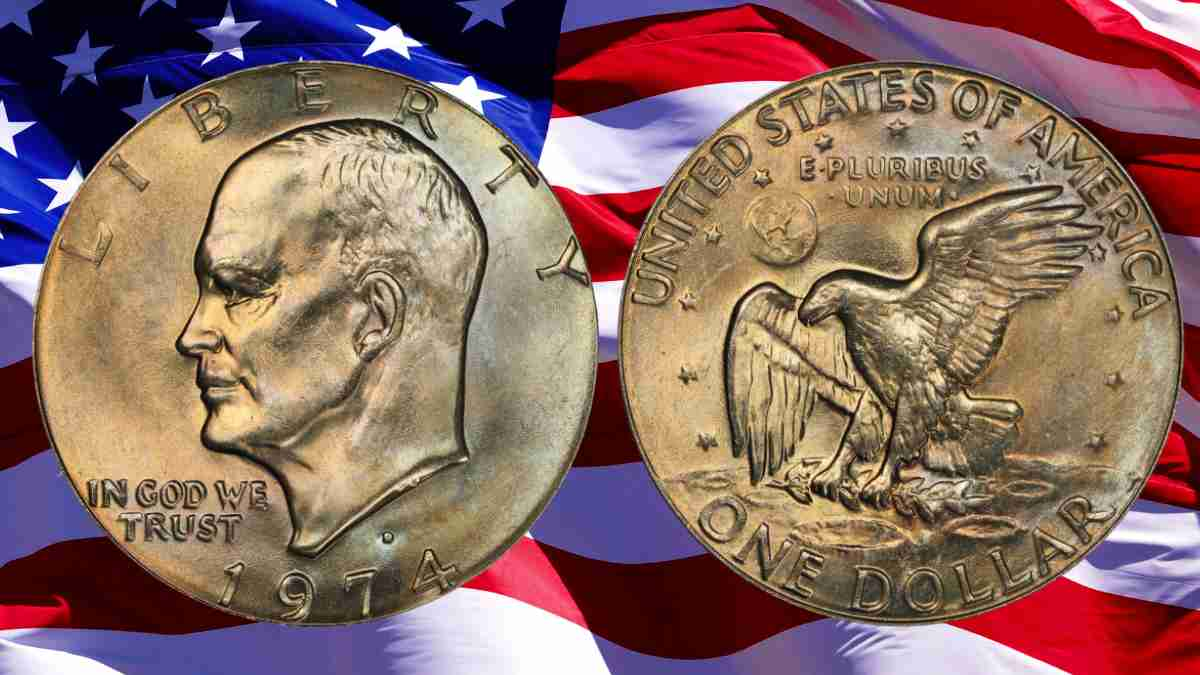Coin collectors can also focus on more recent specimens because they can also be worth a great deal of money. The 1974-D Eisenhower Dollar Coin PCGS MS-67+ is a clear example.
Professional Coin Grading Service graded a 1974-D Eisenhower Dollar at MS65 and it was worth $14,100 at an auction carried out by Heritage Auctions. The date of the auction was 10 years ago, so this dollar could be worth a lot more after all this time. Inflation and the cost-of-living have kept increasing.
Did this 1974-D Eisenhower Dollar Coin have a large mintage?
As a matter of fact, it had a really large mintage. That is why it is so surprising that it has reached such a high value. Actually, the mintage number was 45,517,000.
The U.S. Mint in charge of this piece was the one in Denver. As for its weight, it is just 22.70 grams. The diameter is about 38.50 millimeters and its edge is reeded like many other dollars.
You might be wondering who the designers were, so here they are. Frank Gasparro, James Cooper, and Michael Collins. The metal the Denver Mint used was mostly copper (75%) while the rest was nickel (25%).
The 1974-D Eisenhower Dollar & coin features
For your information, only the 1971-D dollars are more common in high grades for all circulation strike Eisenhower Dollars. According to PCGS, at MS67, which is the highest grade possible, only a few dollars of this kind are available.
So, if you happen to have the 1974-D Eisenhower Dollar MS67, you have a great specimen in your possession. Apparently, there are about 2 dozen pieces in this great condition.
GreatCollections also reports an example sold for $13,162.50 at PCGS MS67+ level. For your information at the moment of the auction, it reached double the value of the PCGS price guide, $6,500.
What factors contribute to the increased value of a coin graded MS-67+ compared to lower grades?
Quality of strike and eye appeal – An MS-67+ coin will have an exceptionally sharp strike with crisp details. It will also have superior eye appeal, with attractive luster and original toning that makes it stand out compared to lower graded examples. The overall visual impact is a major factor in achieving the top grades.
Lack of imperfections – To grade MS-67 or higher, a coin must be virtually flawless. It will have minimal contact marks, bag marks, or other blemishes, even under 5-8x magnification. Lower graded uncirculated coins like MS-60 to MS-64 allow progressively more noticeable marks and imperfections.
Rarity – Very few coins are preserved in grades of MS-67 or higher. For many series, even an MS-65 is considered a condition rarity. This scarcity of top-pop examples in MS-67+ drives up the value substantially compared to the more available coins in MS-66 and below.
Demand from registry set collectors – Many advanced collectors pursue “registry sets” of coins in the highest grades possible. Landing an MS-67+ example of a key date can provide a competitive advantage and bragging rights. This intense competition at the top end puts price pressure on premium quality pieces.




